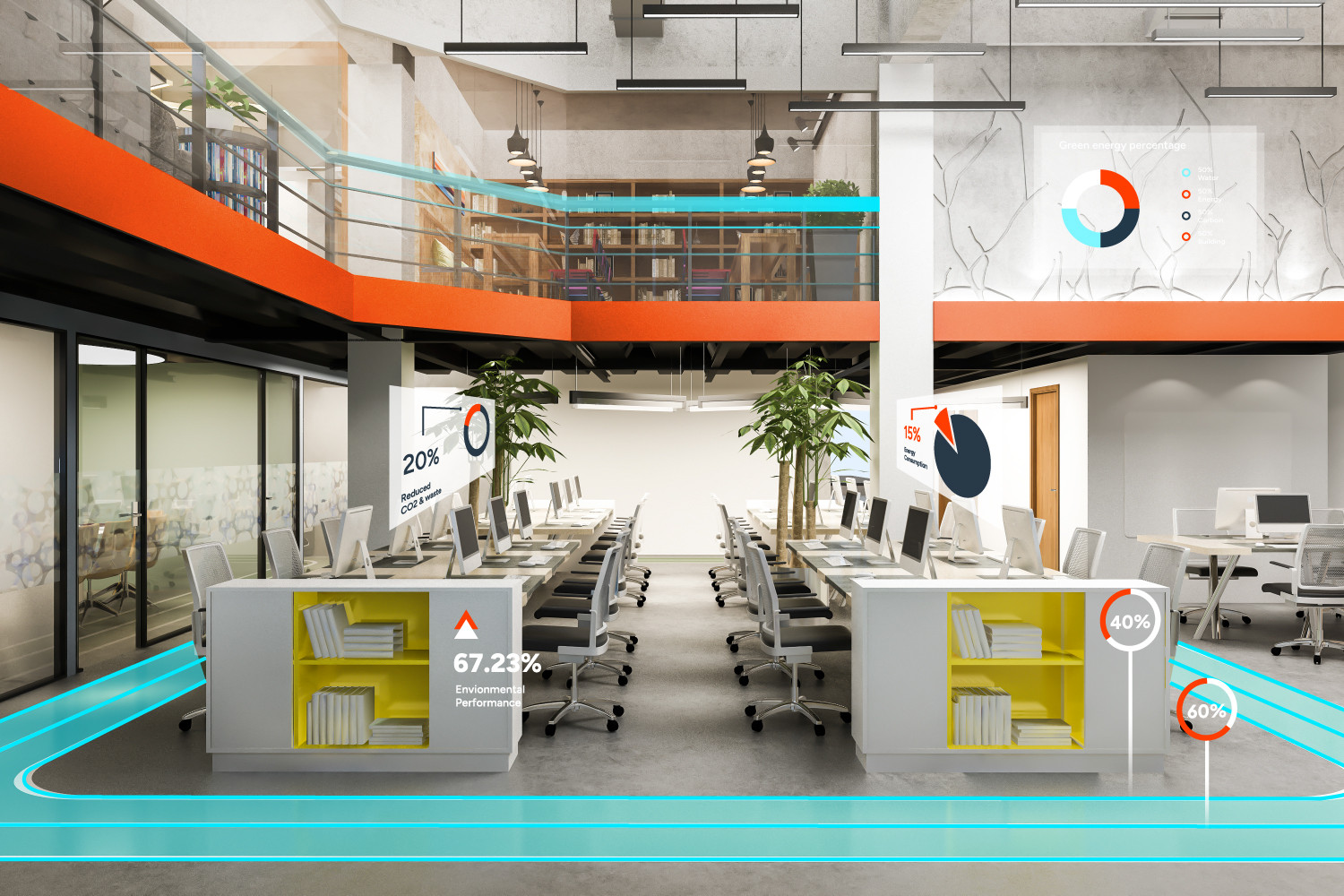With the rapid development of technology, smart buildings have emerged as a shining star in the field of facilities management. Key applications such as automated controls, predictive maintenance, and efficient energy management, significantly enhance management efficiency and living comfort, propelling the construction industry toward a greener and more efficient future.
Key Area 1: The Powerhouse of Automation and Optimization
One of the core strengths of smart buildings lies in their automated control systems, which monitor and manage various equipment within buildings, drastically improving energy efficiency and operational effectiveness. For example:
- Lighting systems: Automatically adjust brightness based on indoor and outdoor light levels, saving energy while maintaining a comfortable lighting environment.
- HVAC systems: Intelligently regulate heating or cooling based on indoor temperature, humidity, and occupant distribution, ensuring optimal indoor comfort.
A notable application is in HVAC systems, where cutting-edge technologies like Deep Q-Networks (DQN) allow the system to adjust heating equipment based on environmental inputs such as facial expressions and movements. This approach reduces energy consumption by up to 20% and enhances employee productivity by approximately 15%.
Key Market Insights:
- The global smart building market was valued at $67.58 billion in 2023.
- It is expected to reach $404.3 billion by 2032, with a compound annual growth rate (CAGR) of 21.99%.
As IoT, big data, and AI technologies continue to evolve, automated control systems in smart buildings will become increasingly advanced and efficient. Integrating BIM (Building Information Modeling) and digital twin technologies will enable comprehensive control of building systems, further boosting operational efficiency and creating new opportunities for innovation in the construction industry.
Key Area 2: Predictive Maintenance – The Driving Force of Development
Predictive Maintenance (PdM) is a condition-based maintenance strategy that uses IoT devices and sensors to collect data on parameters such as temperature, vibration, pressure, and current. By leveraging big data analytics and machine learning, it predicts the likelihood and timing of equipment failures. Compared to traditional scheduled maintenance, this approach significantly reduces downtime, extends equipment lifespan, and lowers maintenance costs.
Applications Across Industries:
- Manufacturing: Over 700,000 factories use vibration monitoring to evaluate machine health, identify potential issues, and take timely action.
- Energy: More than 3,000 power generation facilities rely on vibration monitoring to ensure smooth operations.
In smart buildings, HVAC systems widely adopt predictive maintenance technologies to detect potential failures in advance, reducing downtime and maintenance costs.
Predictive maintenance is expected to integrate with technologies like blockchain and virtual reality to create comprehensive smart maintenance solutions. By 2026, the global predictive maintenance market is projected to grow from $4 billion in 2023 to $12 billion, reflecting immense growth potential.
Key Area 3: Efficient Energy Management
Real-Time Monitoring:
Energy efficiency hinges on real-time monitoring systems. Smart building energy management systems track consumption across key resources like electricity, water, and gas, providing intuitive analytics to help users identify optimization opportunities.
By considering external factors like real-time energy prices and demand response, the system dynamically adjusts energy usage strategies. During peak demand periods, it proactively reduces non-essential consumption, effectively lowering operational costs. Automation through sensors and actuators further improves energy utilization in HVAC, lighting, elevators, and more.
Predictive Capabilities:
Energy management systems utilize historical data and machine learning to forecast future energy demand and issue timely alerts for potential equipment inefficiencies or failures. This ensures stable and efficient energy system operations, driven by technological advancements, policy support, and growing market demand.
As technology continues to evolve, smart buildings will play an increasingly vital role in creating greener, smarter, and more efficient living spaces. They will also serve as a powerful tool in achieving global climate and sustainability goals.
The widespread adoption of smart buildings is poised to inject fresh vitality into the global construction industry, driving society toward a more intelligent and sustainable future.
